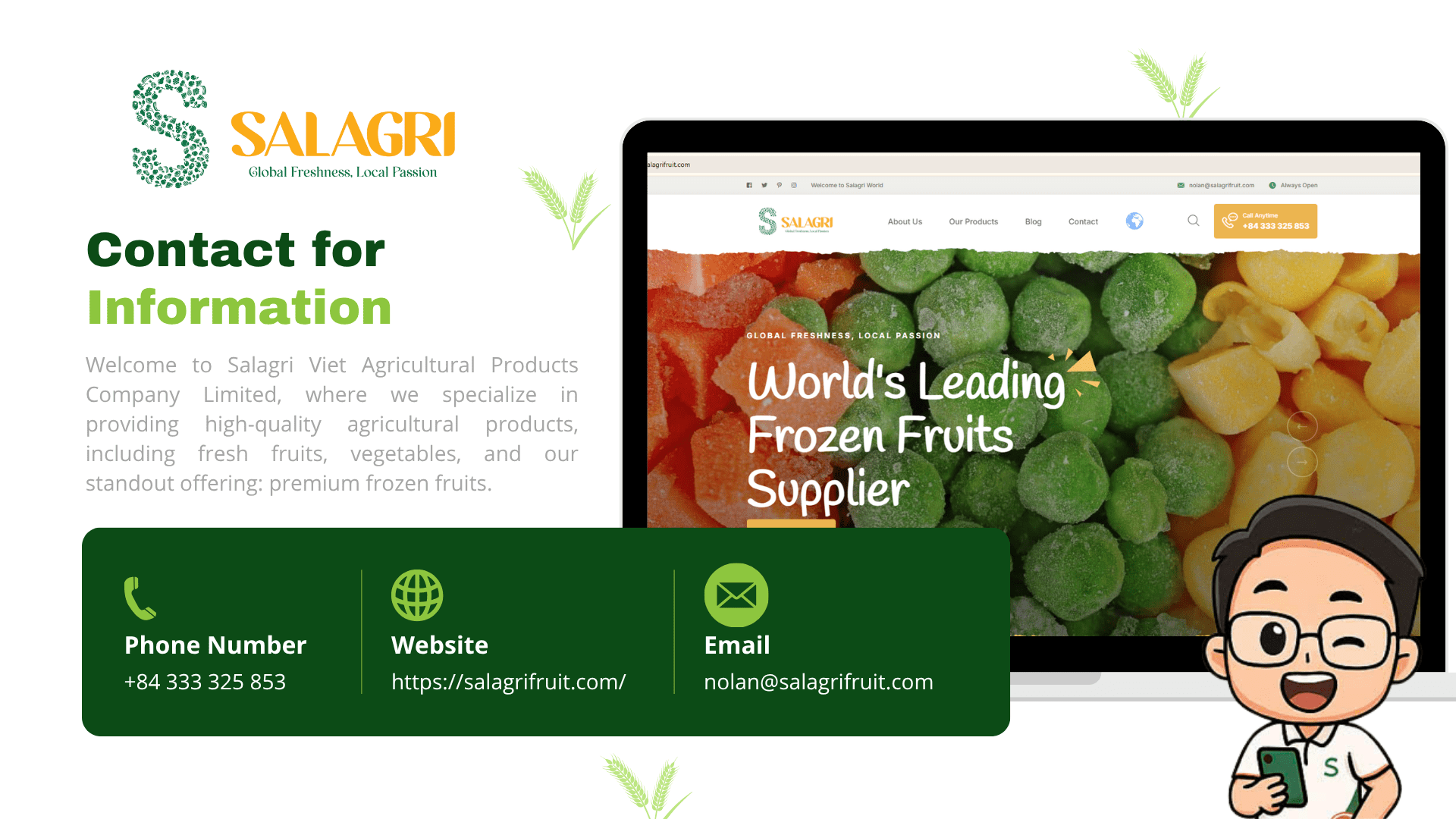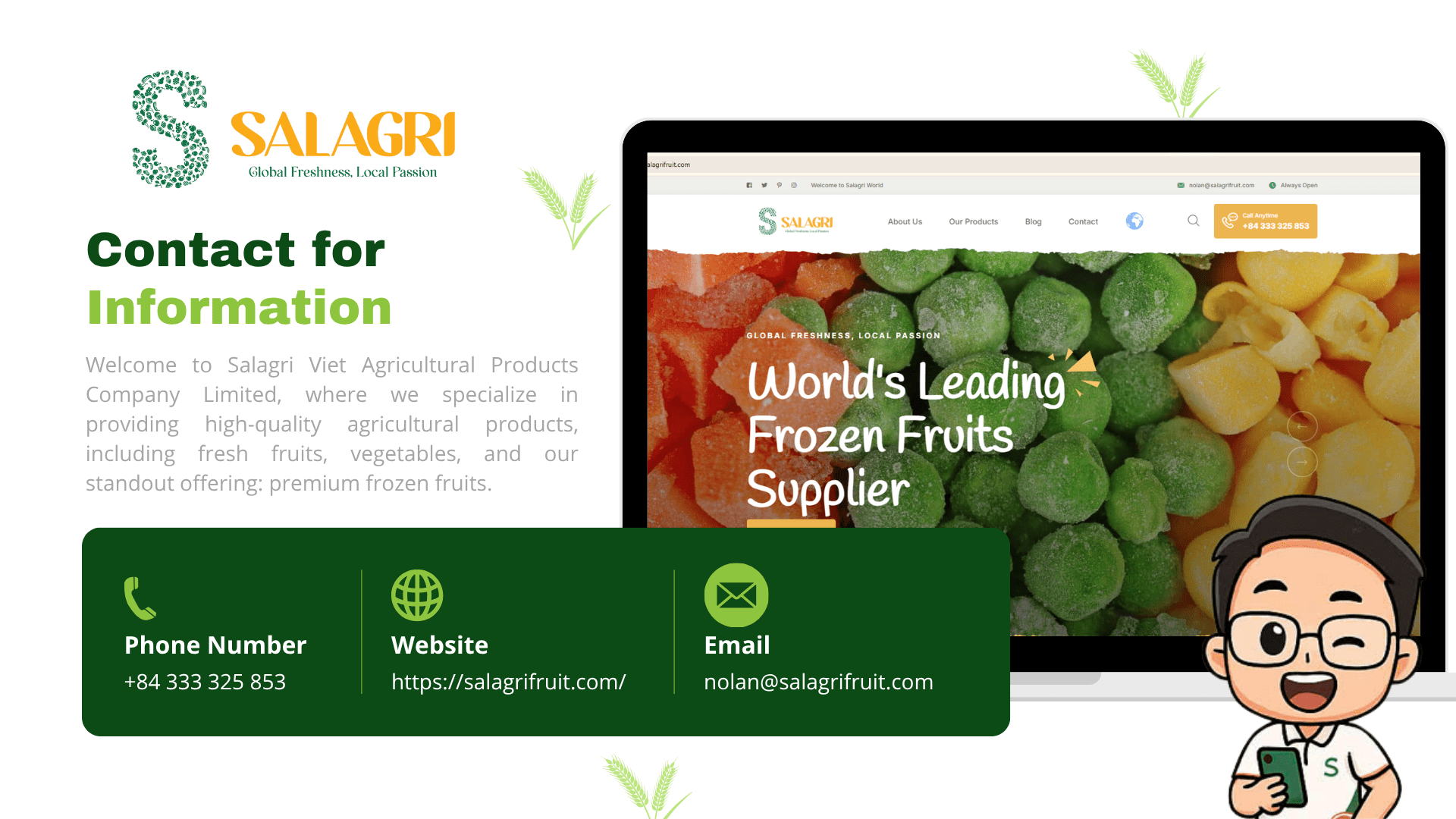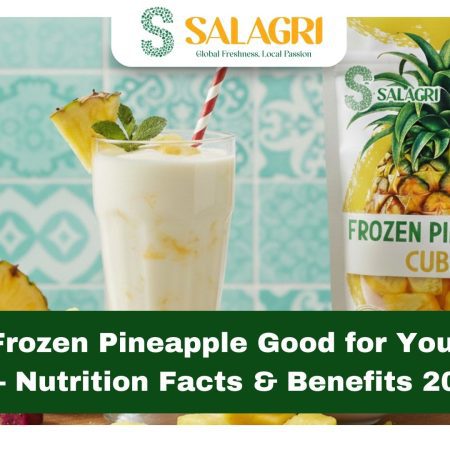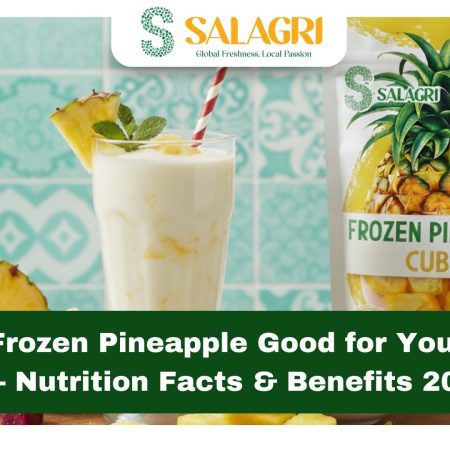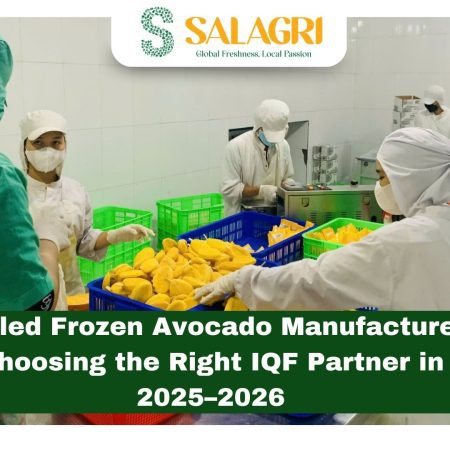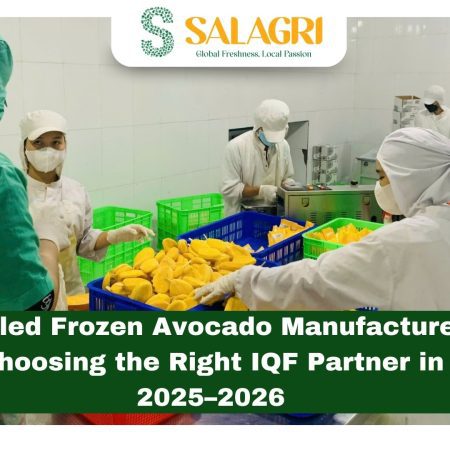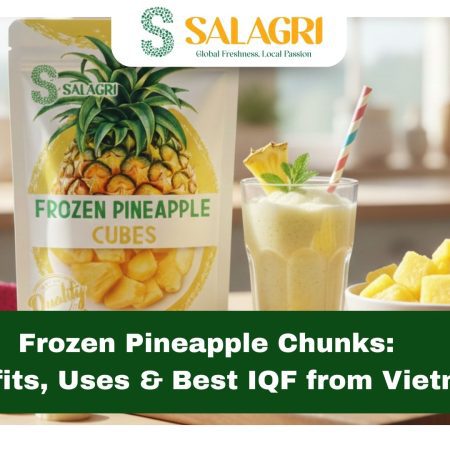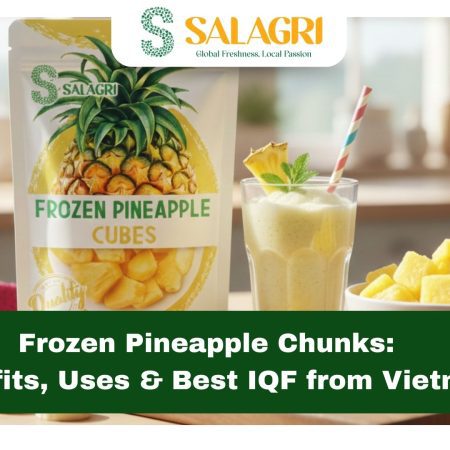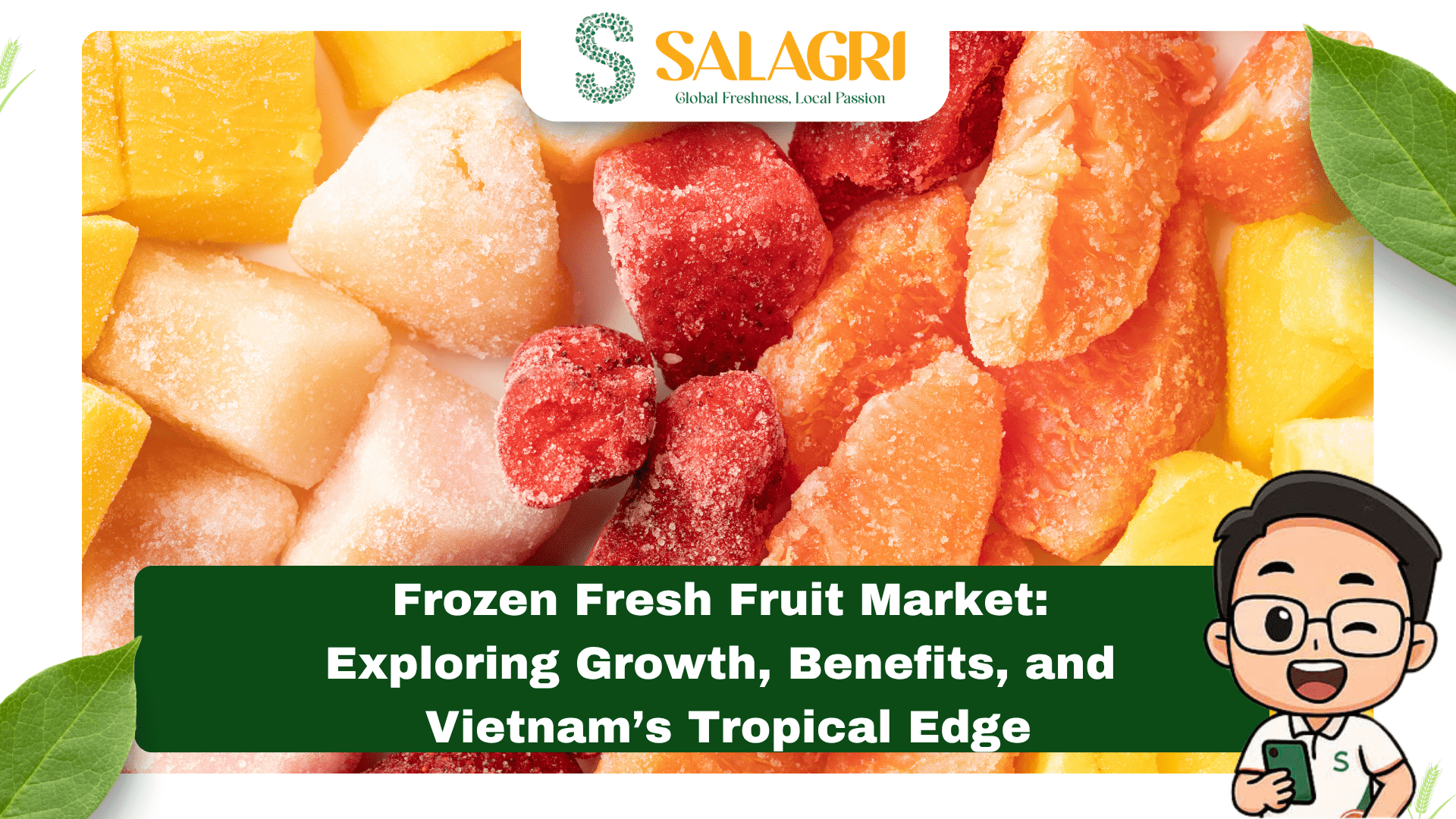
As someone who’s always loved the vibrant taste of tropical fruits like mango and dragon fruit, I’ve seen the frozen fresh fruit market transform how we enjoy these treats year-round. No longer just a backup for fresh produce, frozen fruits are driving a global industry that blends convenience, nutrition, and sustainability. In 2025, the global frozen fruit market is valued at approximately $7.86 billion, with projections to reach $11.21 billion by 2032 at a CAGR of 5.2%. Vietnam, a tropical powerhouse, is a key player, with its frozen fruits and vegetables market growing at a 10.68% CAGR to $2.221 billion by 2032. Whether you’re a smoothie enthusiast or a business eyeing export opportunities, this market is ripe with potential. In this article, we’ll explore the trends fueling the frozen fresh fruit market, the benefits of frozen fruit, why buying online from Vietnam’s SALAGRI Fruit is a smart choice, and how to use these fruits in delicious recipes—all with a human touch and a nod to Vietnam’s tropical excellence.
What’s Driving the Frozen Fresh Fruit Market?
The frozen fresh fruit market is thriving, fueled by consumer demand for healthy, convenient foods and advancements in freezing technology. In 2025, global trade volumes exceed 3 million tonnes, with imports alone at 3.1 million tonnes, according to JK International. The market’s growth is powered by urbanization, rising health consciousness, and the need for year-round fruit availability. Frozen fruits, harvested at peak ripeness and flash-frozen, deliver “fresh” quality without the logistical challenges of transporting perishable produce.
Vietnam is a standout in this space. Its frozen fruits and vegetables market, valued at $1.05 billion in 2024, is projected to reach $2.02 billion by 2033 at a 7.58% CAGR, with frozen fruit exports growing from $115.57 million in 2020 to $401.69 million in 2024. The country’s tropical climate—warm, humid, and sunny—produces premium fruits like mangoes, pineapples, and dragon fruit, making it a top exporter to markets like the U.S., EU, and China. With e-commerce boosting access and sustainability trends shaping packaging, Vietnam’s role in the global market is only growing stronger.
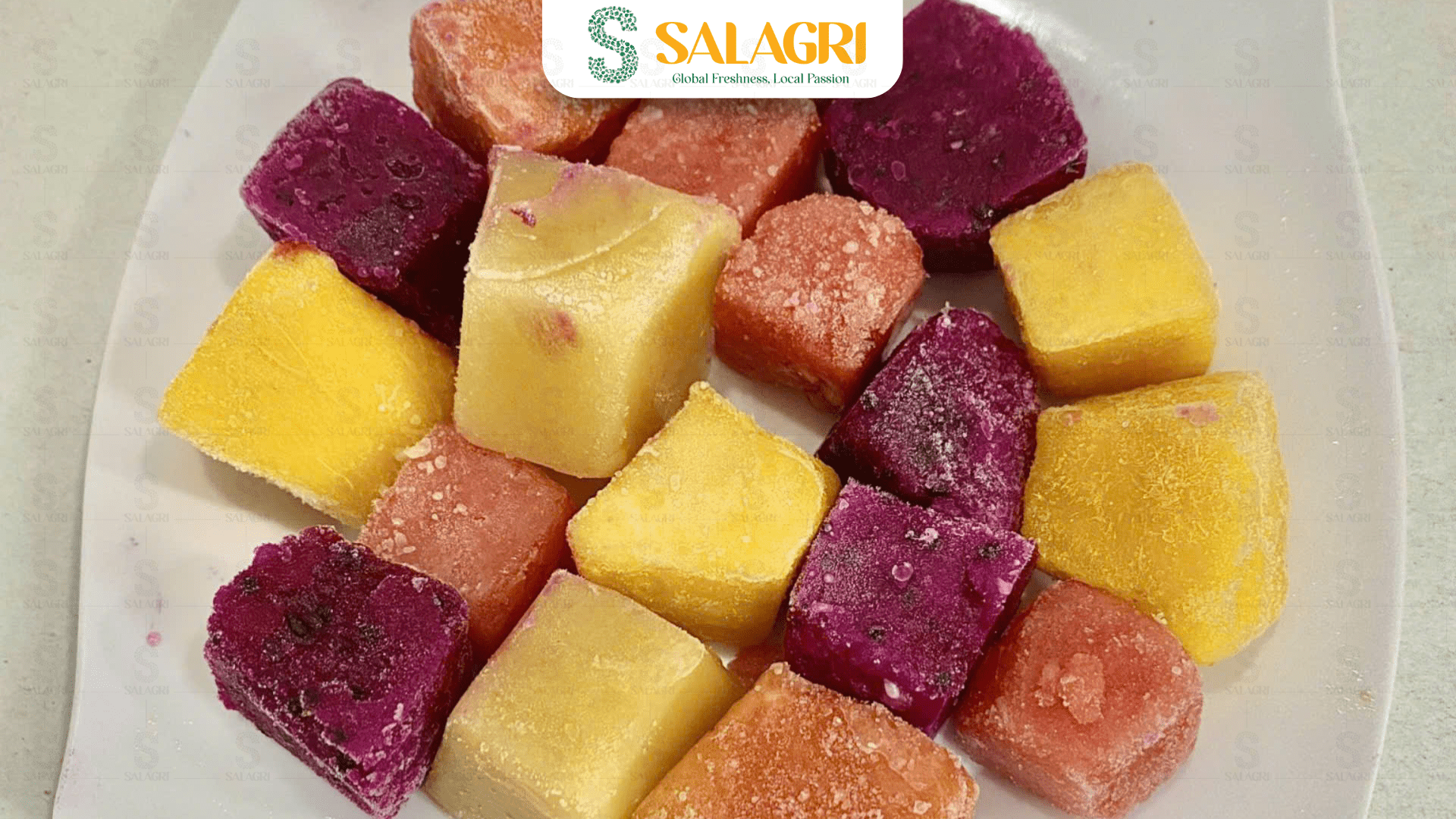
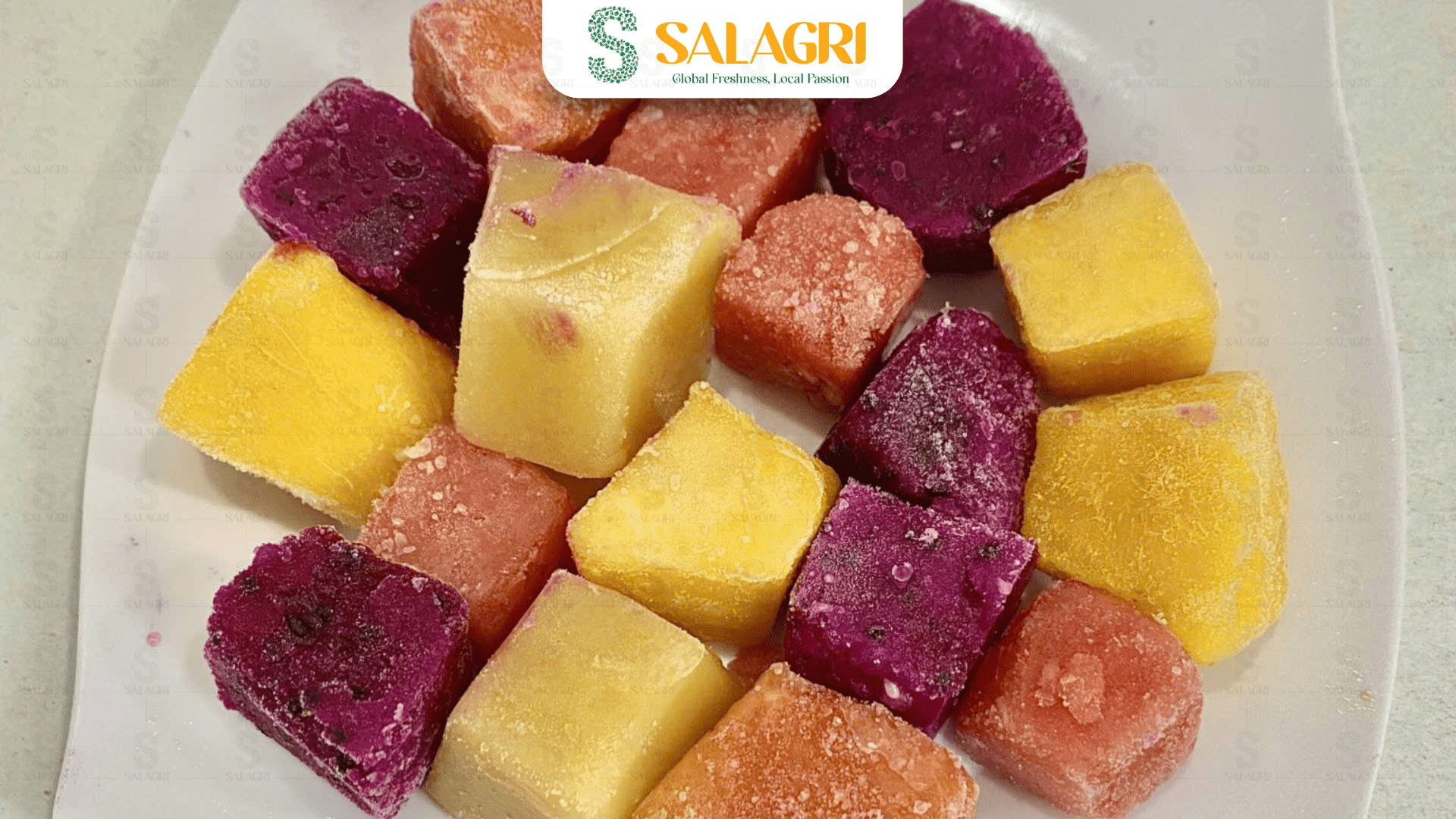
Benefits of Frozen Fruit: Nutrition Meets Convenience
Frozen fruit isn’t just a stand-in for fresh—it often surpasses it in practicality and nutrition. A 2025 Journal of Food Science study found that frozen fruits retain up to 95% of their vitamins and antioxidants, sometimes outperforming fresh produce stored for days. Here’s why frozen fruit is a game-changer:
- Nutrient Retention: Flash-freezing locks in vitamins like C and A, plus antioxidants like betalains in dragon fruit, supporting immunity and heart health.
- Extended Shelf Life: Stored at -18°C, frozen fruit lasts up to 24 months, reducing waste compared to fresh, which spoils in days.
- Creamy Texture: Perfect for smoothies, frozen fruit creates a thick, ice-cream-like consistency without diluting flavors with ice.
- Year-Round Access: Enjoy tropical fruits like passion fruit or watermelon anytime, no matter the season.
- Cost-Effective: Often cheaper than out-of-season fresh, with pre-portioned packs for easy use.
These benefits make frozen fruit a staple for health-conscious consumers and businesses alike, from home kitchens to global foodservice.
Why Buy Frozen Fruit Online from Vietnam?
Buying frozen fruit online is a modern convenience that’s reshaping the frozen fresh fruit market. E-commerce accounts for 20% of market growth in 2025, offering doorstep delivery, bulk options, and transparent sourcing details. You can explore certifications, read customer reviews, and set up subscriptions—all while cutting down on store trips and packaging waste.
Vietnam stands out as a premier source for frozen fruit. Its fertile regions, like the Mekong Delta and Binh Thuan, produce over 1.5 million tons of tropical fruits annually, including dragon fruit, mangoes, and pineapples, per 2025 USDA reports. The country’s ideal growing conditions yield fruits with unmatched sweetness and nutrition, frozen within hours using Individually Quick Frozen (IQF) technology to preserve quality. Vietnam’s frozen fruit exports surged by 247.57% from 2020 to 2024, with key markets like Thailand, the U.S., and South Korea driving demand.
SALAGRI Fruit, a leading IQF fruit supplier in Vietnam, capitalizes on this by sourcing sustainable, additive-free fruits from local farms. Their frozen fruits and vegetables—certified by HALAL, BRC, and FDA—offer global buyers premium quality at competitive prices. Whether you’re a consumer blending smoothies or a business scaling production, SALAGRI’s online platform makes accessing Vietnam’s tropical bounty seamless.
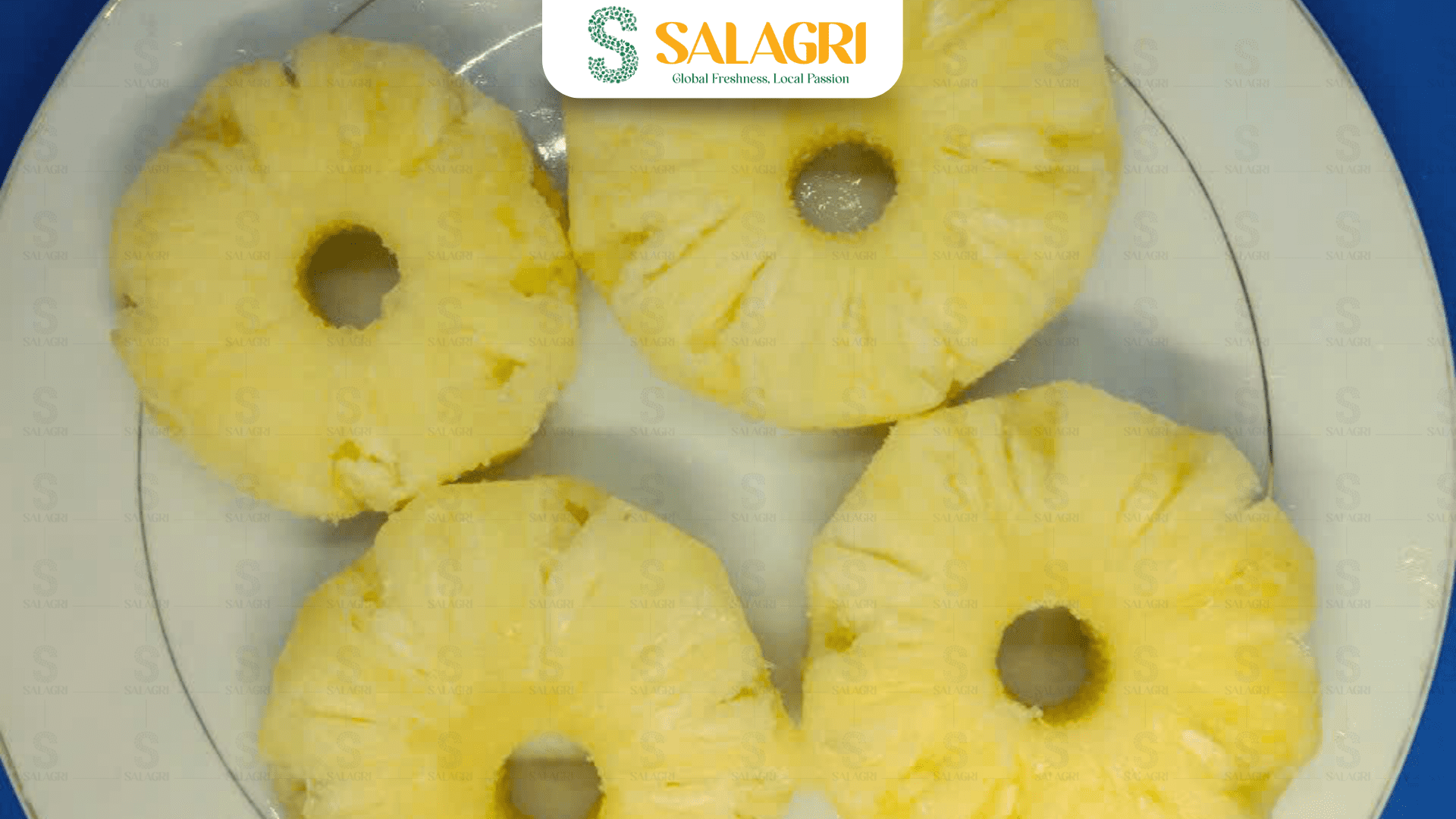
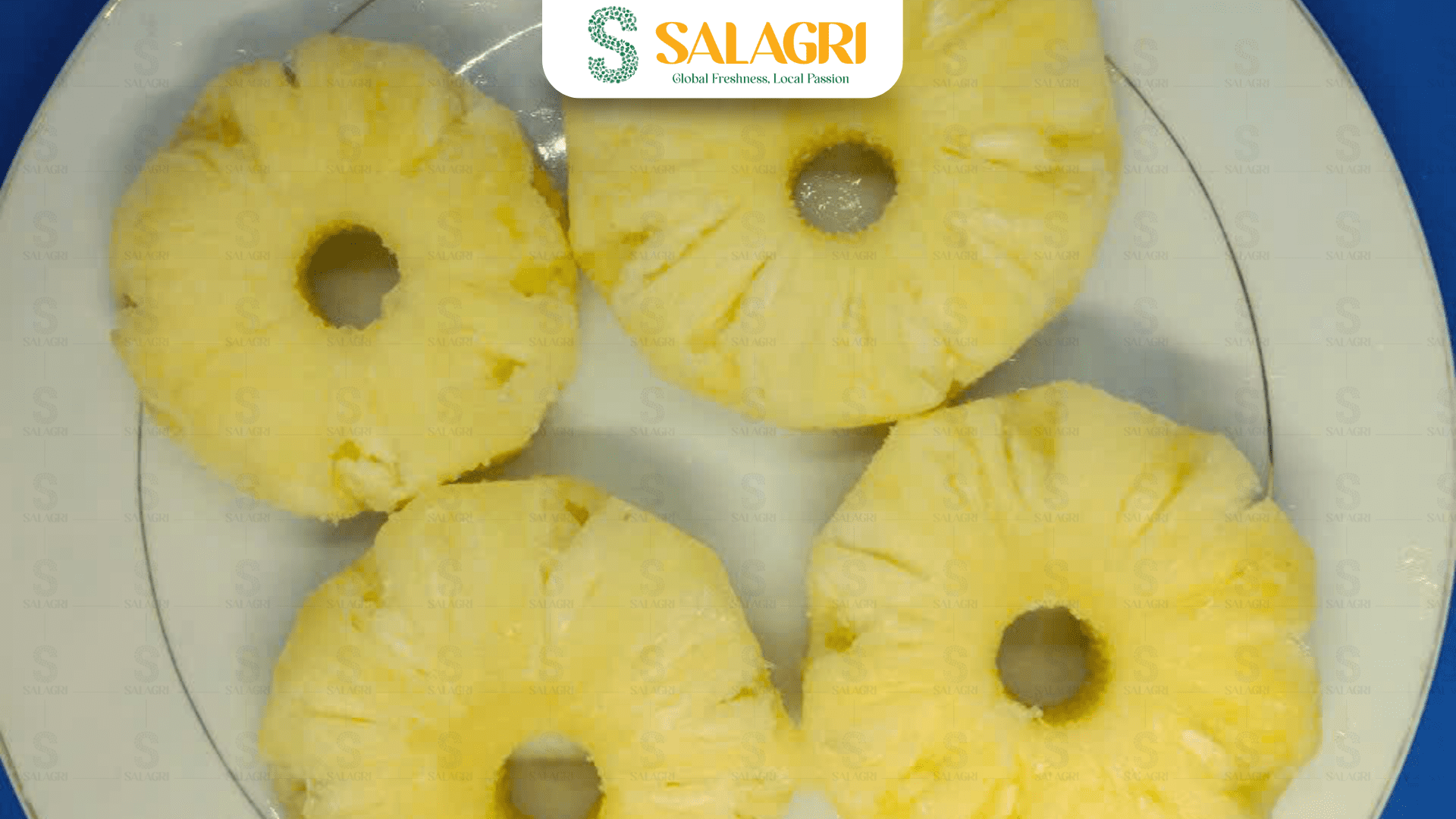
SALAGRI Fruit: Leading the Frozen Fruit Revolution
SALAGRI Fruit is the world’s leading provider of frozen fruits and vegetables, specializing in Vietnam’s tropical treasures like mango, pineapple, avocado, banana, dragon fruit, passion fruit, and watermelon. Their IQF technology ensures each piece retains its flavor, color, and nutrients, making it ideal for smoothies, desserts, or savory dishes. With eco-friendly packaging and global shipping, SALAGRI supports both individual buyers and commercial clients, aligning with the frozen fresh fruit market’s sustainability trends.
Key Trends in the Frozen Fresh Fruit Market
The frozen fresh fruit market is dynamic, with several trends shaping its trajectory through 2032:
- E-Commerce Growth: Online sales hit 30% of the market, with platforms like SALAGRI’s streamlining access.
- Tropical Fruit Surge: Vietnam’s exports, especially mango and dragon fruit, grew 15% in 2025, driven by demand in Asia-Pacific and the EU.
- Health and Wellness: Organic and low-sugar frozen fruits are growing at an 8% CAGR, reflecting consumer priorities.
- Sustainability Push: Eco-friendly packaging and low-water farming in Vietnam meet global green demands.
- Global Reach: Asia-Pacific holds 40% of the market, but North America and Europe are increasing imports for foodservice and retail.
Challenges like supply chain disruptions are mitigated by Vietnam’s advanced cold-chain logistics, ensuring consistent quality.
Recipes to Enjoy Frozen Fruit
Frozen fruit is incredibly versatile. Here are three recipes using SALAGRI’s offerings:
- Mango Dragon Fruit Smoothie: Blend 1 cup SALAGRI frozen mango, ½ cup frozen dragon fruit, 1 banana, and 1 cup almond milk (250 cal). Antioxidant-packed for a morning boost.
- Pineapple Coconut Bowl: Thaw 1 cup SALAGRI frozen pineapple, mix with Greek yogurt and granola (200 cal). Perfect for breakfast or dessert.
- Passion Fruit Slushy: Blend ½ cup SALAGRI frozen passion fruit, 1 cup frozen watermelon, and sparkling water (150 cal). Refreshing and hydrating.
These showcase Vietnam’s tropical flavors and SALAGRI’s quality.
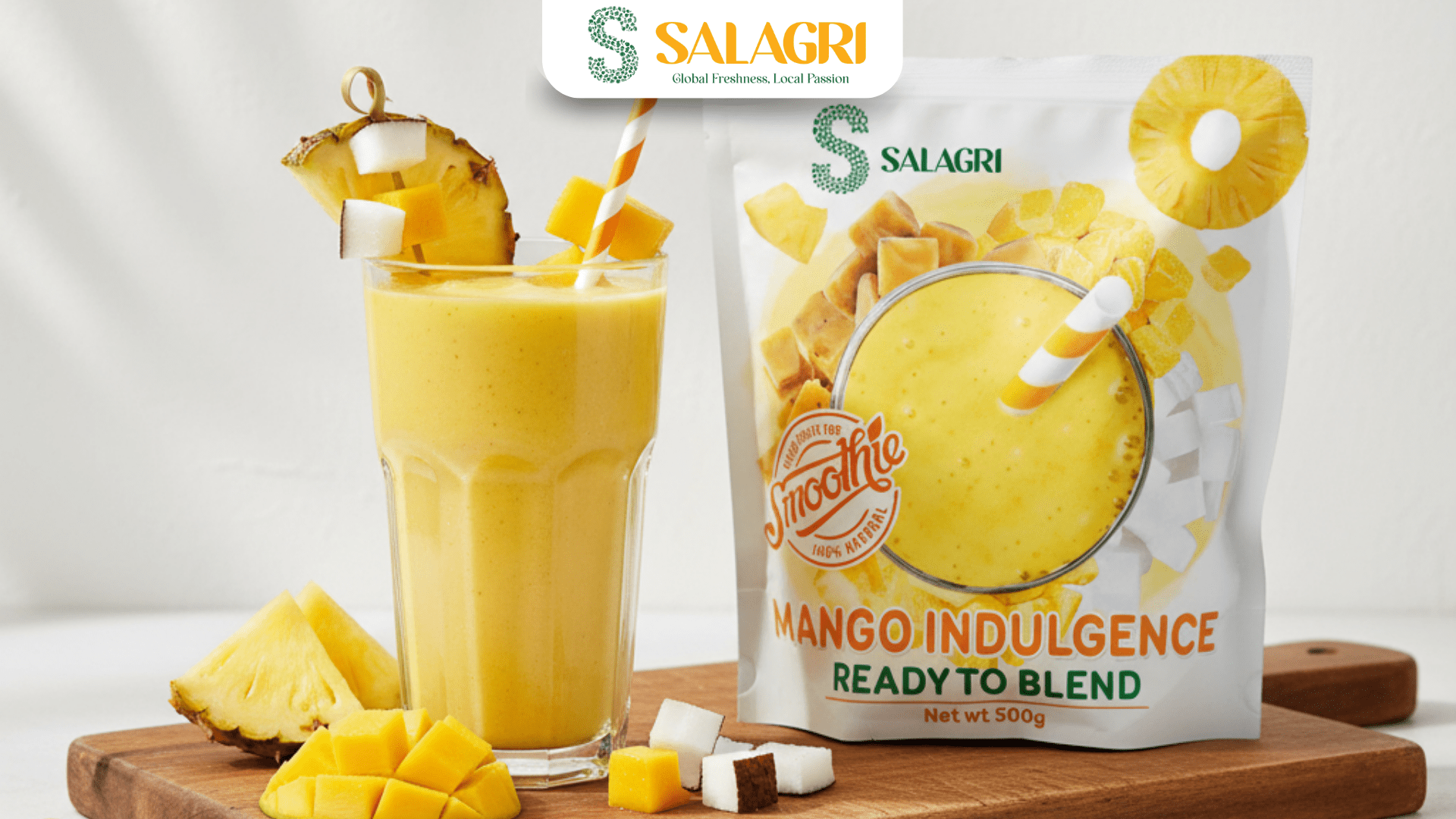
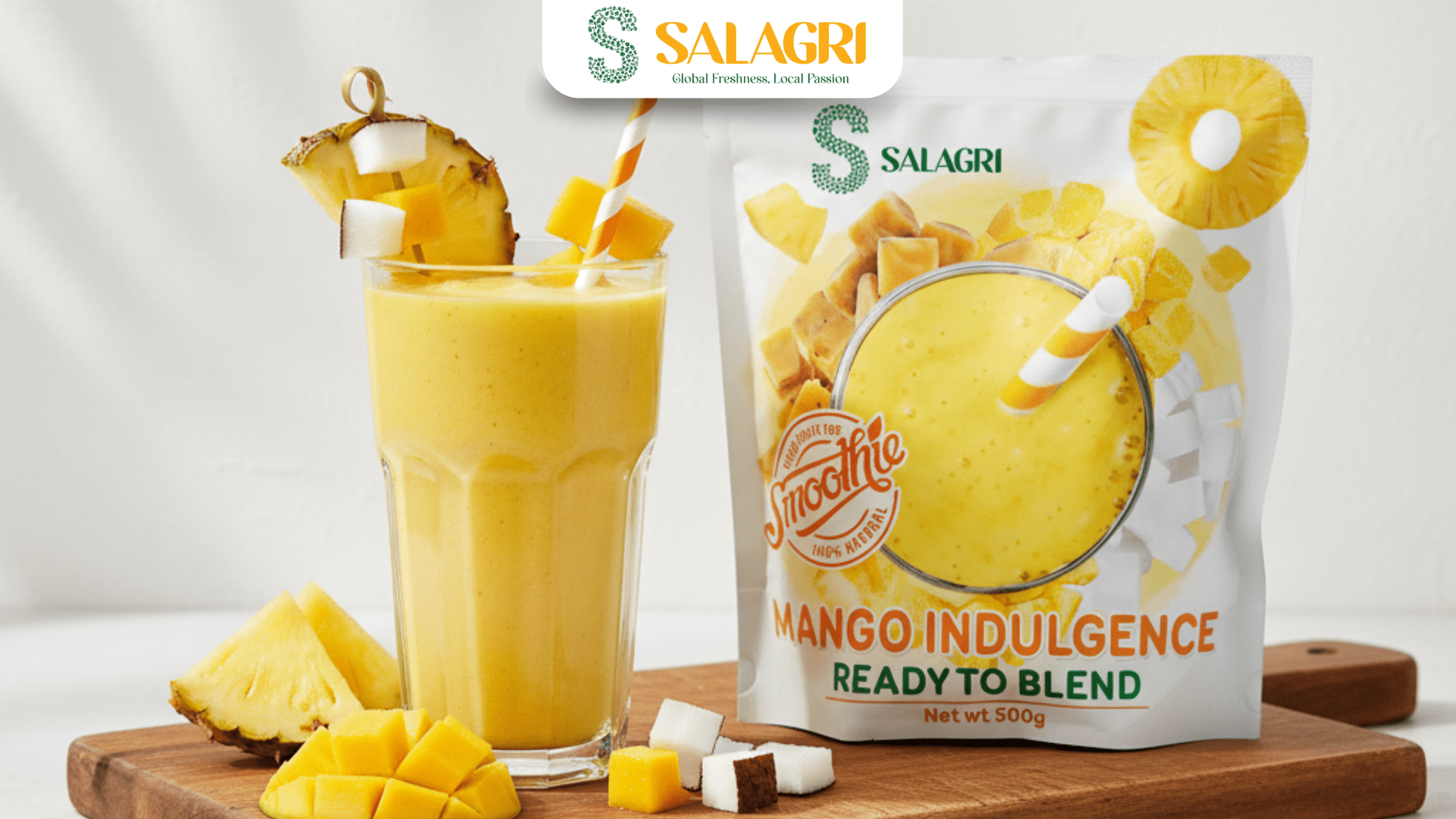
Tips for Using Frozen Fruit
- Smoothies: Blend frozen for a thick texture; no ice needed.
- Baking: Add frozen berries directly to batters for vibrant flavor.
- Storage: Keep at -18°C; use within 24 months for optimal taste.
- Thawing: Refrigerate overnight for salads or toppings to avoid mushiness.
Conclusion: Tap into the Frozen Fresh Fruit Market with SALAGRI
The frozen fresh fruit market is a powerhouse, valued at $7.86 billion in 2025 and projected to reach $11.21 billion by 2032. Vietnam’s tropical dominance, with its frozen fruits and vegetables market hitting $2.221 billion by 2032 at a 10.68% CAGR, makes it a global leader. SALAGRI Fruit brings this excellence to your kitchen with premium IQF products. Order from their frozen fruits and vegetables today and savor the taste of Vietnam’s tropics—nutrition, convenience, and flavor all in one.
